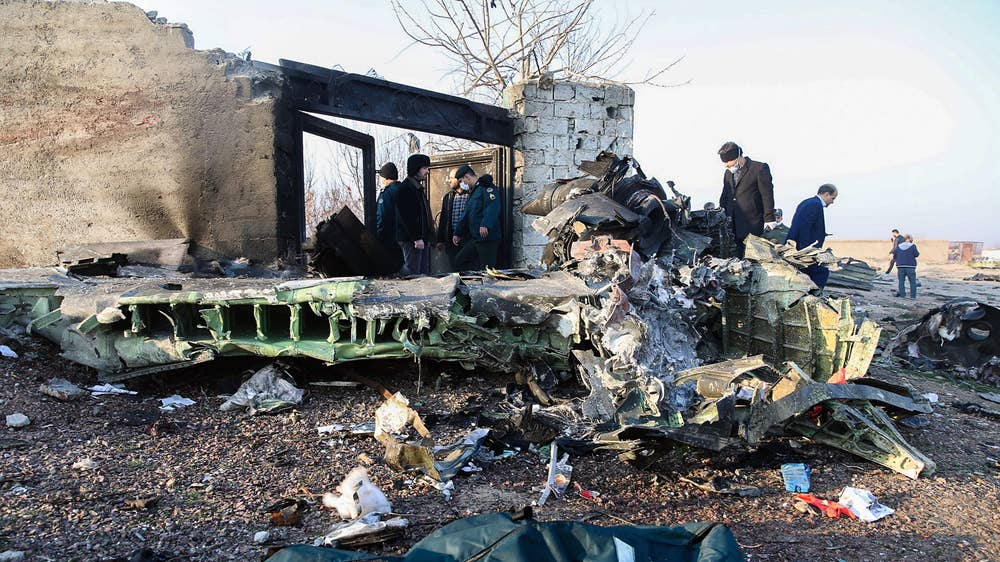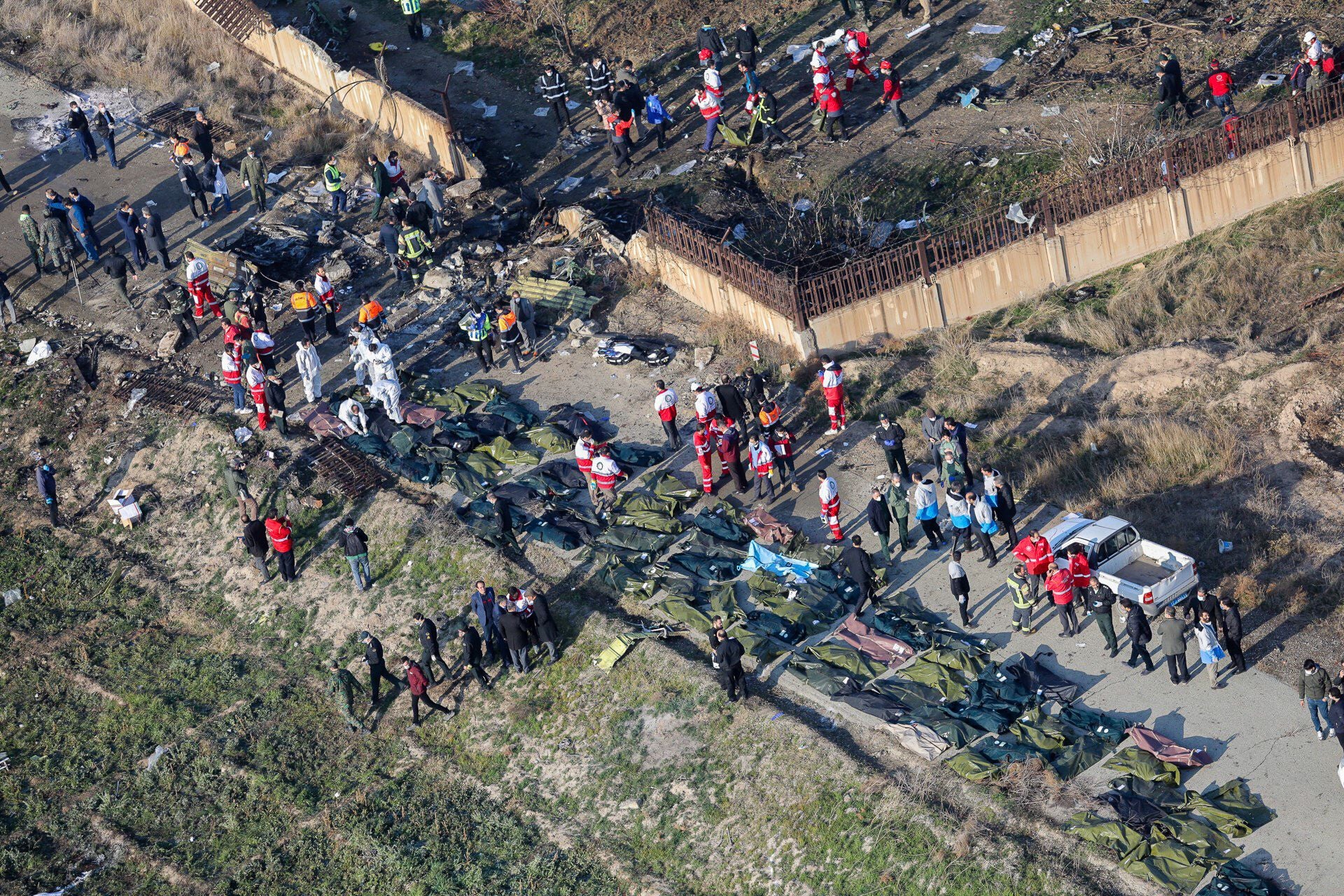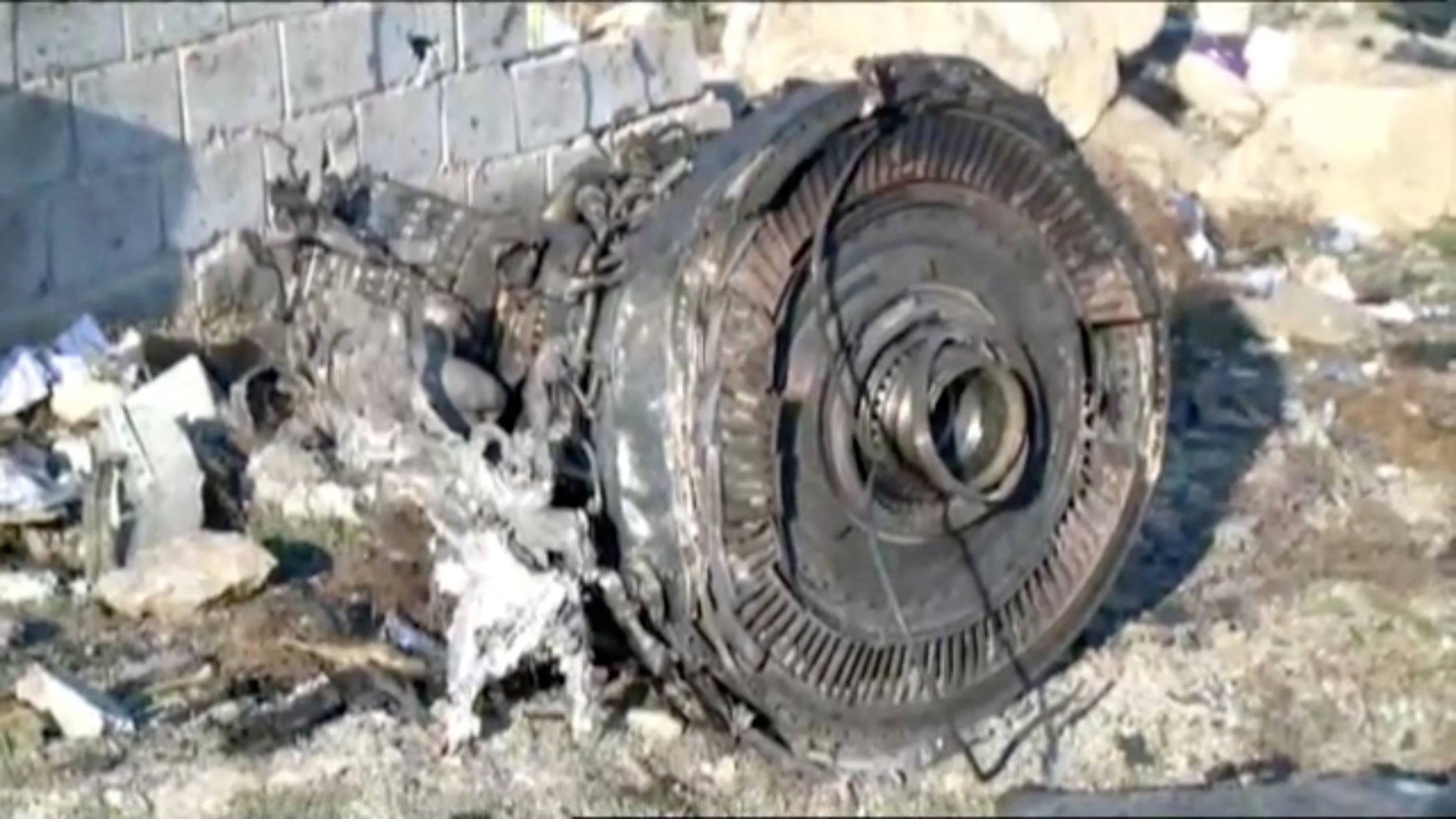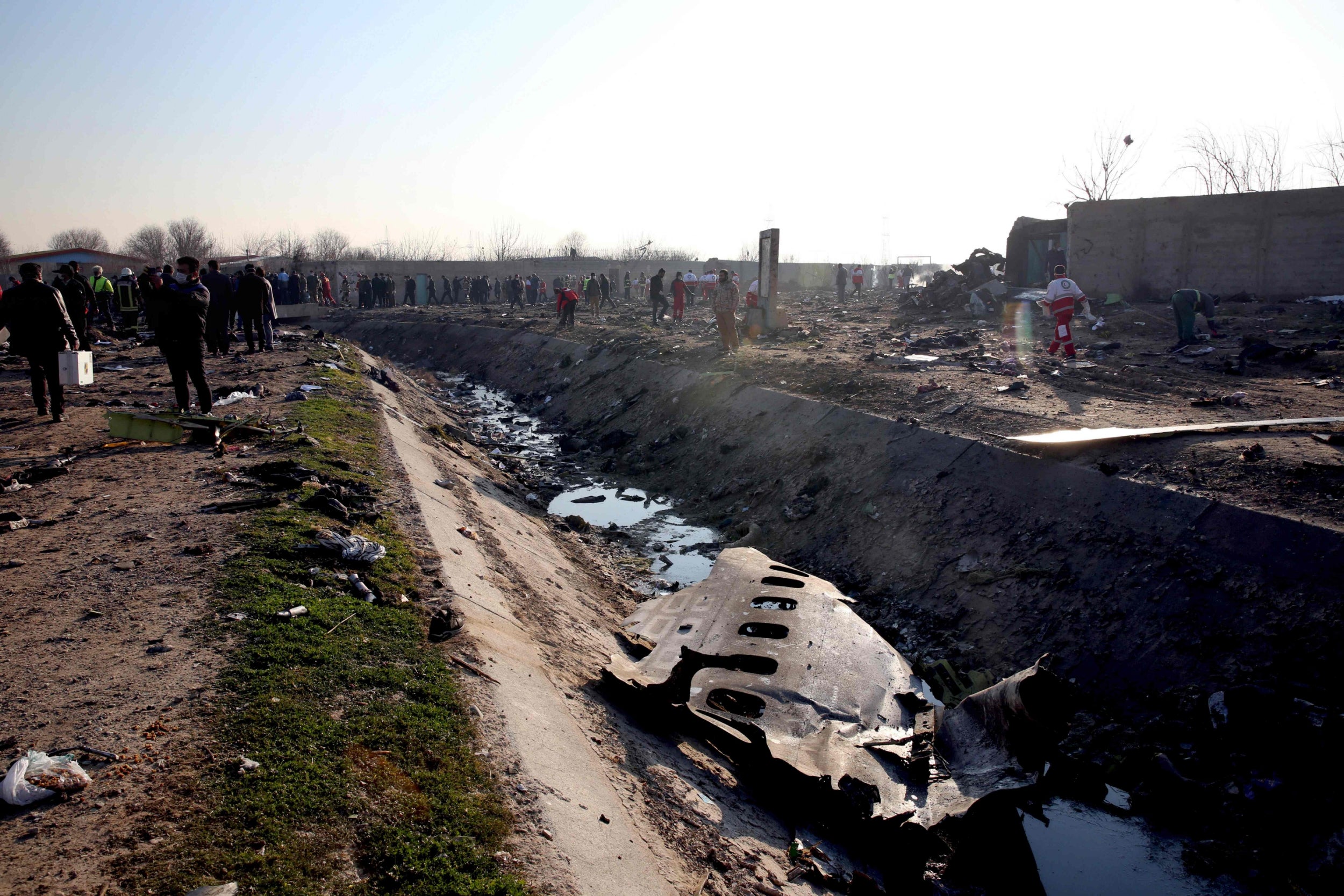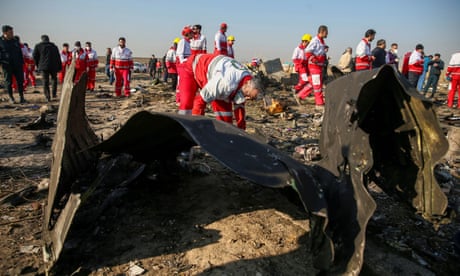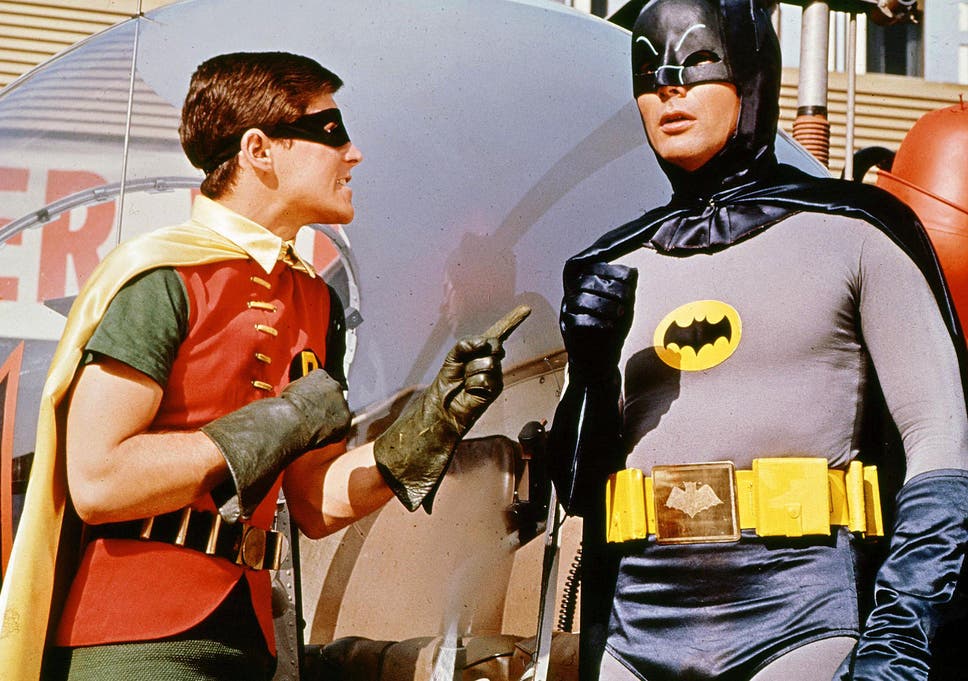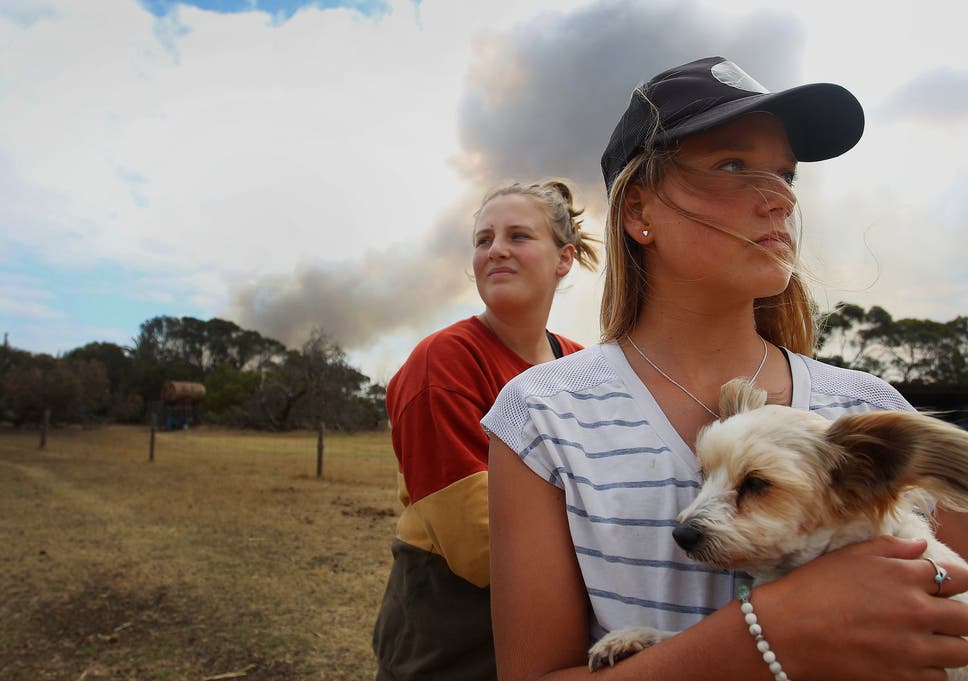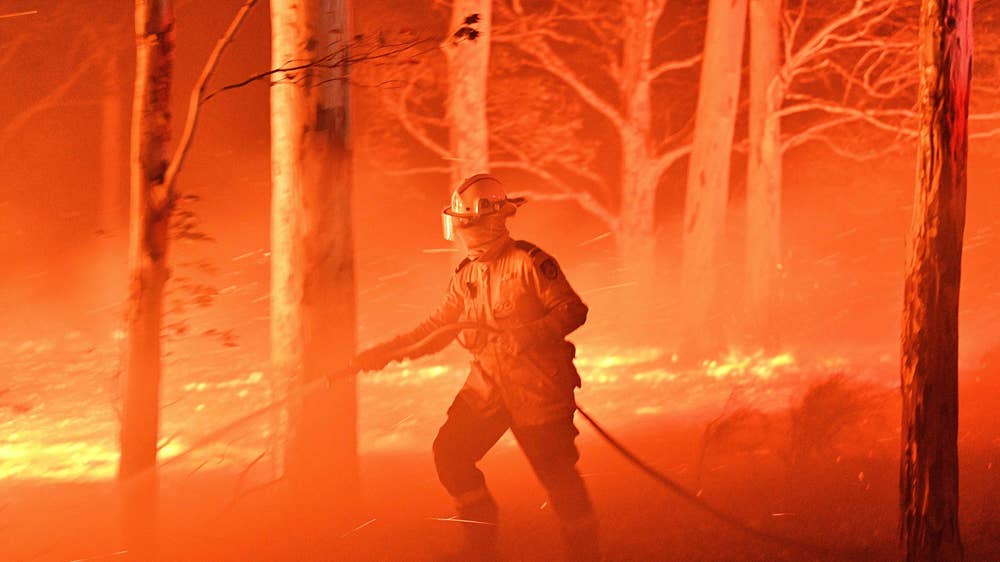Security guards at the theatre recall being bribed by people wanting to skip the queues
Annabel Nugent @annabelnugent
A New York Times article detailing the frenzy that ensued after The Exorcist was first released in theatres across New York City has been rediscovered. (FULL ARTICLE BELOW)
The 1974 article, titled “They Wait Hours – To Be Shocked”, is circulating online after it was posted by a user onto the link-sharing site Reddit.
William Blatty’s classic horror film terrified people across the world with its chilling story of Regan, a possessed little girl, and the battle to save her from the devil – coupled with a handful of special effects that would be unlikely to raise even an eyebrow today.
The NYT piece describes the chaos at New York City's theatres and the unprecedented mania that the film caused.
The article paints apocalyptic scenes of crowds waiting hours to see the film.
“.... People stood like sheep in the rain, cold and sleet for up to four hours to see the chilling film about a 12-year-old girl going to the devil,” wrote the article’s author, Judy Klemeswurd.
“They lighted bonfires at their waiting post on Second Avenue, between 59th and 60th Streets, to keep warm."
Security guards at the theatre recall being bribed by people wanting to skip the queues. Scalpers received upwards of $50 for a pair of tickets – an equivalent of almost $300 today given inflation.
So desperate were people to see The Exorcist that a “riot” ensued at one cinema when “it looked like they weren’t going to make it inside after a four-hour wait”.
Klemeswurd remembers “the stale odour of vomit” in the cinema when describing the immediate reactions of moviegoers watching the film for the first time.
Vomiting, fainting, nausea, trembling... the list reads like a list of possible side effects on a label for medication. The article also reports the occurrence of heart attacks and even a miscarriage.
The graphic portrayal of Regan's demonic possession is indelible, the likes of which hadn't been seen before in mainstream cinema. Scenes in which the little girl spider-walks down the stairs, spins her head 360 degrees, and projectile vomits a clumpy green substance (filmmakers used pea soup) are undoubtedly some of cinema’s most iconic and memorable moments.
Screenings of the R-rated movie were packed long after it premiered on 26 December 1973, despite the mixed reviews it received.
---30---
THE AUTHOR AND SCREENWRITER WILLIAM PETER BLATTY WAS A FORMER PSYOPS OFFICER IN US ARMY INTELLIGENCE AND LATER CIA. HE WAS A PRACTISING LAY CATHOLIC.
DURING THE VIETNAM WAR IN THE EARLY DAYS OF THE DIEM REGIME IN THE SOUTH, HE ORGANIZED A MASS EXODUS OF NORTH VIETNAMESE, GOING TO SAIGON TO SEE SUPPOSEDLY A CATHOLIC SAINT.
MASSES OF AIR DROPPED LEAFLETS BY US AIR FORCE LET FOLKS KNOW WHO DID NOT HAVE TV OR RADIOS. IN THE AMERICAN PRESS BLATTY USED THE MASS
EXODUS OF VILLAGES TO THE SOUTH AS EVIDENCE OF NORTH VIETNAMESE
VIOLENCE AGAINST ITS PEOPLE DRIVING THEM TO THE SOUTH
IN THE FILM THE EXORCIST SUBLIMINAL IMAGES WERE USED AS WELL AS SUBLIMINAL SOUNDS. A WHITE FACE IMAGE WAS FLASHED
BETWEEN SCENES TO INDUCE PSYCHOLOGICAL FEAR. RECORDING OF LOCUSTS WERE USED IN THE BACKGROUND SOUND EARLY IN THE FILM IN THE DESERT SCENES TO CAUSE AUDIENCE IRRITATION, AND UNEASE, WE DO NOT LIKE
THE HIGH PITCHED SCRATCHING LOCUSTS MAKE.
Web results
3 days ago - When director William Friedkin's The Exorcist opened in 1973, it quickly became one of the most critically acclaimed and financially successful ...
Dec 29, 1999 - The Exorcist is also, gasp, a thinking man's horror film - a ... The levitating bed, the subliminal fast cuts of a demon in ... African bug and some locusts. ... demon's voice sounds like a soft-spoken female Reverend with none of
Search Results
Web results
In William Friedkin's The Exorcist (1973) sound is a key strategy in the ... In an early consideration of the techniques used to build suspense in The Exorcist, ... picks up on this theme and stages Pazuzu as a swarm of locusts descending upon ...
Oct 24, 2014 - More than 40 years after its initial release, "The Exorcist" remains a ... for sound mixing, and it's hard to think of a film in which sound is used ...
The Exorcist--The Version You've Never Seen boasts a digitally remastered and ... Bill Blatty, Buzz Newton--who was the original sound mixer--and the current ... Instead, we used good recordings that were made in, say, 1985 on SR mag.
Yet astride the visual image of Evil in The Exorcist, there persists in sound another ... This is to say that the « sound thinking » used in horror film sound design aims ... the hybridic demon god Pazuzu is allied with locust swarms and pestilence.
Search Results
Web results
Only this time William Peter Blatty's readers are in for a different surprise. ... among the Jesuits at Georgetown; the turns as a CIA wannabe, a comic writer, ... the war in Vietnam raged and inner cities smoldered, the off-the-wall farces Blatty was ...
Jan 13, 2017 - The author and filmmaker, most famous for his 1971 novel about a possessed child, died of a form of blood cancer.
Jan 13, 2017 - William Peter Blatty, the author whose best-selling book “The Exorcist” was both a milestone in horror fiction and a turning point in his own ...
Missing: CIA VIETNAM PSYOPS
THIS IS THE ORIGINAL NYT ARTICLE
They Wait Hours to Be ShockedBy Judy Klemesrud
Jan. 27, 1974

Credit...The New York Times Archives
.
THAT New York phenomenon, the longlonglonglonglong movie line, was carried to new lengths in recent weeks after William Friedkin's Christmas offering, “The Exorcist,” opened on Dec. 26 at Cinema I. This time, people stood like sheep in the rain, cold and sleet for up to four hours to see the chilling film about a 12‐year‐old girl going to the devil.
They lighted bonfires at their waiting post on Second Avenue, between 59th and 60th Streets, to keep warm, littered the streets with food wrappings, got into fist fights, and annoyed shop owners and apartment dwellers who didn't like their entry‐ways blocked by a great wall of humans. Once, on a Friday night, they even stormed Cinema I when It looked as though they weren't going to make it inside after four‐hour wait.
“It was like a riot,” sale Ralph Bailey, one of six night‐time uniformed security guards at the theater. “We had to cancel the showing.” Mr. Bailey, by the way, said he had been offered bribes as high as $110 to let people jump to the head of the line. (Scalpers were getting $50 for a pair of tickets.)
It's been reported that once inside the theater, a number of moviegoers vomited at the very graphic goings‐on on the screen. Others fainted, or left the theater, nauseous and trembling, before the film was half over. Several people had heart attacks, a guard told me. One woman even had a miscarriage, he said.
The crowd situation was eased on Jan. 18, when the film moved to three other theaters also owned by the Rugoff chain—the Paris, the Beekman and the Paramount. Cinema I was left with a lot of trash on its floors, the stale odor of vomit, and many shattered box‐office records. The first week's gross was a record $94,903.50; the attendance was 28,183. On the single highest day, Saturday, Dec. 29, 4,658 people jammed the theater, paying $16,222.50.
The main question is, “Why?” Why are people standing in those longlonglonglanglong lines, when the reviews weren't all that great? (They were, as they say in the trade, “mixed,” with resounding “no's” from such heavyweight critics as Vincent Canby of The Times, Pauline Kael of The New Yorker, Jay Cocks of Time and Paul Zimmerman of Newsweek.) And why is “The Exorcist” causing ecstatic Warner Brothers executives to predict that it will be the highest grossing film in their company's history, surpassing even “My Fair Lady,” which grossed $34‐million?
To find out, I went to the heart of the matter —The Line I stood in, or hung around, a Cinema I line on a Saturday afternoon, a Tuesday night and a Thursday morning to find out what kind of people were going to the movie and why.
Nine out of 10 people were young—the longhaired high school and college crowd in blue jeans and casual jackets. But here and there saw matrons in mink coats, and prosperous looking silver‐haired men in their Bloomingdale's suedes. Anywhere from a fourth to a third of the crowd was black, generally a high figure for an East Side theater. One black Manhattan secretary explained it to me this way:
“A lot of blacks relate to voodoo and witchcraft and that kind of devil stuff Many still believe in black magic, especially those from Haiti and the Deep South.”
Approximately one third of the people I talked to said they wanted to see the movie because they had read the best‐selling novel “The Exorcist,” by William Peter Blatty, who also wrote the screenplay.
.
THAT New York phenomenon, the longlonglonglonglong movie line, was carried to new lengths in recent weeks after William Friedkin's Christmas offering, “The Exorcist,” opened on Dec. 26 at Cinema I. This time, people stood like sheep in the rain, cold and sleet for up to four hours to see the chilling film about a 12‐year‐old girl going to the devil.
They lighted bonfires at their waiting post on Second Avenue, between 59th and 60th Streets, to keep warm, littered the streets with food wrappings, got into fist fights, and annoyed shop owners and apartment dwellers who didn't like their entry‐ways blocked by a great wall of humans. Once, on a Friday night, they even stormed Cinema I when It looked as though they weren't going to make it inside after four‐hour wait.
“It was like a riot,” sale Ralph Bailey, one of six night‐time uniformed security guards at the theater. “We had to cancel the showing.” Mr. Bailey, by the way, said he had been offered bribes as high as $110 to let people jump to the head of the line. (Scalpers were getting $50 for a pair of tickets.)
It's been reported that once inside the theater, a number of moviegoers vomited at the very graphic goings‐on on the screen. Others fainted, or left the theater, nauseous and trembling, before the film was half over. Several people had heart attacks, a guard told me. One woman even had a miscarriage, he said.
The crowd situation was eased on Jan. 18, when the film moved to three other theaters also owned by the Rugoff chain—the Paris, the Beekman and the Paramount. Cinema I was left with a lot of trash on its floors, the stale odor of vomit, and many shattered box‐office records. The first week's gross was a record $94,903.50; the attendance was 28,183. On the single highest day, Saturday, Dec. 29, 4,658 people jammed the theater, paying $16,222.50.
The main question is, “Why?” Why are people standing in those longlonglonglanglong lines, when the reviews weren't all that great? (They were, as they say in the trade, “mixed,” with resounding “no's” from such heavyweight critics as Vincent Canby of The Times, Pauline Kael of The New Yorker, Jay Cocks of Time and Paul Zimmerman of Newsweek.) And why is “The Exorcist” causing ecstatic Warner Brothers executives to predict that it will be the highest grossing film in their company's history, surpassing even “My Fair Lady,” which grossed $34‐million?
To find out, I went to the heart of the matter —The Line I stood in, or hung around, a Cinema I line on a Saturday afternoon, a Tuesday night and a Thursday morning to find out what kind of people were going to the movie and why.
Nine out of 10 people were young—the longhaired high school and college crowd in blue jeans and casual jackets. But here and there saw matrons in mink coats, and prosperous looking silver‐haired men in their Bloomingdale's suedes. Anywhere from a fourth to a third of the crowd was black, generally a high figure for an East Side theater. One black Manhattan secretary explained it to me this way:
“A lot of blacks relate to voodoo and witchcraft and that kind of devil stuff Many still believe in black magic, especially those from Haiti and the Deep South.”
Approximately one third of the people I talked to said they wanted to see the movie because they had read the best‐selling novel “The Exorcist,” by William Peter Blatty, who also wrote the screenplay.
“I read the book twice and I wanted to compare it with the movie,” Rick Monday, 28, of Secaucus, N..J., a manager for the Exxon Corporation, said as he stood behind gray police barricades. “I sort of believe in all that stuff—Satan worship, E.S.P., cosmic traveling.”
The pea‐jacketed Mr. Monday took the long wait in line stoically, reasoning that it would probably be anywhere from four to six months before he could see “The Exorcist” without having to stand in line. “I waited two hours to see ‘The Godfather,’ he recalled. “The waiting isn't so bad. You just have to know how to do it. You come to the theater early to buy your tickets, you get something to eat, do a little shopping, and then come back.”
Robert McClendon, 20, of Brooklyn, who works in the mail department of a Chase Manhattan bank, and his girlfriend, Deborah Hall, 19, of Queens, a clerk‐typist, said they came because they couldn't imagine how a director could capture on film those parts of the book dealing with the exorcism.
“I wanted to see the bedrom scenes, like when the furniture is flying around and everything,” Robert said. Added Deborah: “And wanted to see the part (Continued on Page 13)
Lawrena Fried where the girl's bed is shaking up and down and where the priest actually performs the exorcism.”
Otto Ross, 22, who described himself as “a New Jersey tombstone engraver,” said: “I wanted to see how the girl's face becoMes contorted and how she emits a foul odor from her mouth And I want to see how they show her masturbating with a crucifix. I can't believe they could really show that.”
It seemed that the largest group, after the “I‐read‐thebook” people, were the “Imust ‐be ‐crazy ‐to ‐be here” people. “We're here because we're nuts and because we wanted to be part of the madness,” said Ted Fishman, a well‐dressed Long Island home builder who was standing in line with his wife. “There's a little bit of morbid curiosity in all of us.”
Then cache the “I've‐neverstood‐in‐line‐before” people. “I tell you, I have never stood in line for any movie or any restaurant before in my life!” said a 68‐year‐old woman from Peter Cooper Village, who refused to give her name.
“I haven't stood in line since the time I saw Frank Sinatra at the Paramount Theater,” said Mrs. Lee Piccillo, a 46‐year‐old blonde in a leopard skin coat, who was with six people from Port Reading, N.J., including her husband, John, a truant officer. “I was just a girl then,” she added, dreamily, “and Frankie was... wonderful!”
Many people were coming back to see the movie for a second time, or a third, or a fourth, or a fifth. Jack Fletcher, a 19‐year‐old drama student at the Juilliard School, said he had seen the film while home for Christmas in San Francisco, and was back to see it again because it was “so terrifying.”
“I like horror movies very much,” he said, “and this movie is definitely the best one to come out since the 1930's or 1940's. It's much better than ‘Psycho.’ You feel contaminated when you leave the theater. There's something that is impossible to erase. I've had nightmares ever since I've seen it.”
Bruce Galashaw 24 of Queens, who recently graduated from Bernard Baruch College, returned to the theater to see “The Exorcist” after having walked out on it (“I got sick”) the previous day. This time he brought his girl friend, Barbara Simpson, for moral support.
“I had just gotten through eating yesterday,” he explained, sheepishly. “Then got into the movie, and there was this little girl [Linda Blair], a superb actress, and her face got all scratched up and bloody. The thing that really got me was the scene with the crucifix. And then she threw up all this green pasty fluid — gooky, thick stuff that looked almost like hominy grits.”
He paused smiled and said: “Isn't it stupid, walking out on a movie when you're 24 years old?”
I went to “The Exorcist” alone during the first (11 A.M.) showing on a Thursday morning, and it was an experience like I'd never had before in a movie theater. The house was full of course, except for the first two rows. Before the movie began, there was a feeling of tenseness throughout the theater, a random scream here and there, nervous giggling. The young man to my left sat on the edge of his seat throughout the film, and kept shouting, “Oh, wow! Oh, wowl” Now and then he would touch my elbow, as though for reassurance Two girls on my right slouched deep in their seats, covering their faces with their fur chubbies when things ‘got scary. During the exorcism, there was continuous screaming in the theater and it sounded like the old screaming ‐for ‐screaming's‐sake that one used to hear at early Beatles and Rolling Stone concerts. I noticed several people leave in the middle of the film but
Apparently the bizarre goings‐on aren't limited to the moviegoers, Kent Blazy, Cinema l's harried young manager, told me that soon after “The Exorcist” opened, an usher at the theater fell under a subway train and lost an arm. Then the mother of a cashier died. No one is saying whether the movie had anything to do with it, of course, but...
I was extremely relieved to notice that there were very few small children at this R‐rated movie. One of the few I saw during my visits to The Line was Marilyn Ladley, a 7‐year‐old with long braids from Staten Island, who was with her mother, also named Marilyn. Mother Marilyn did most of the talking. “I told her ‘It's a very horrible movie,” Mrs. Ladley said, “and she said, ‘I'm not afraid. In fact most of the movies she has seen have been horror movies.”
Another day at The Line, I met Bill Hurt, 23, who talked like a sociologist rather than the drama student that he is when asked him why he would stand in line for a movie, any movie. He smiled and said: “It makes the movie better, right? The more you pay for something, the more it's worth. And it also has to do with telling your friends that you've seen it.”
Mr. Hurt's comments prompted me to call David Riesman, the famed Harvard sociologist and author of “The Lonely Crowd,” to ask him if there were reasons, totally unrelated to a hit movie, why people stand in line for hours. He said that it was a good way for strangers to meet in a city.
“Standing in a movie line doesn't commit you to having a motive,” he said. “It's a relationship that doesn't ask too much. In a singles bar, there is a motive, and people who go there are subject to interpretations and misinterpretations. For example, a single woman at singles bar might feel that people will think she's there as date‐bait. The ‘standing on one foot conversation that she might have with a stranger in a movie line might be more comfortable for her.”
Whatever their motives or reasons, people are flocking to see “The Exorcist” in record numbers, and they are coming out smiling, or shaking, or stunned. “I've lost my appetite,” was the most frequent complaint I heard, but on the whole, there were surprisingly few negative remarks. I suppose that the people who would have been really offended by the film would know from the reviews what they were getting into and wouldn't have endured The Line in the first place. Or else they were among those who left before the movie
My own chief complaint was that the movie got an R rating, and, therefore, is open to little kids as long as they are with a parent or adult guardian. I think that if a movie ever deserved an X rating simply because it would keep the kids out of the theater, it is “The Exorcist.”
I also wonder if director Friedkin really needed to show all of the blood and gory detail in the hospital scenes, where the doctors are shown taking tests to try to find out what's wrong with the girl. I also wonder what effect this film will have on the borderline psychotics. Will they think they're possessed now, rather than mentally ill? At any rate, there is at least one indication that the mental hospitals will find their business increasing. A recent item in a Chicago newspaper said six people who had seen “The Exorcist” in that city wound in psychiatric hospital.
Priests too may be receiving spme strange requests that they never had before. Although I saw no priests in The Line, one 33‐year‐old Roman Catholic woman who had seen the film told me: “I suppose all of the nuts who think they need an exorcist will go looking for Catholic priests. I certainly don't think the film has done the Catholic Church any favor.”
But other than that, the majority of the post‐movie comments from theatergoers were raves, and went something like this: “Absolutely extraordinary!” or “It's so vivid” or “They captured the book extremely well” or “There's nothing else like it.”
“It's a story of faith of believing in God,” Teddy. Shaw, 19, of the Bronx, a student at Wesleyan University and a believer in “a greater being,” told me as he walked out of the theater. “Finally, good triumphs over evil.”
He broke into a radiant grin.
---30---
